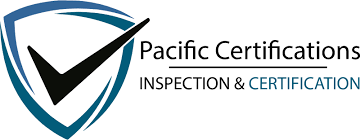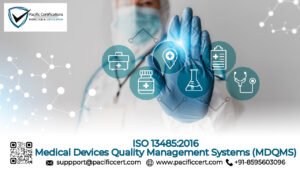What is ISO 16232?

ISO 16232:2018 specifies methods for measuring and analysing the cleanliness of automotive components and systems, particularly those in contact with fluids such as fuel, oil, coolant, or brake fluid. The standard is widely recognized across the automotive industry for managing technical cleanliness in road vehicles, ensuring particle contamination does not interfere with the performance or lifespan of parts.
It focuses on particle extraction, filtration, and analysis techniques, helping manufacturers maintain quality control throughout the production lifecycle. By applying ISO 16232, companies gain a structured approach to control cleanliness and avoid unexpected failures caused by microscopic contaminants.
To begin your ISO 16232 audit or certification process, contact us at support@pacificcert.com
Purpose
The purpose of ISO 16232 is to provide a unified framework for evaluating and controlling particulate contamination in automotive components. As modern vehicles become increasingly sensitive to micro-scale debris, cleanliness has a direct influence on reliability, functionality, and customer satisfaction. The standard allows manufacturers to standardize cleanliness testing methods across suppliers, preventing inconsistencies and unnecessary product recalls. It also enables the correlation of test results across different facilities and partners within the global automotive supply chain.

In an environment where cleanliness is tightly linked to product quality, ISO 16232 helps reduce the margin for error by establishing procedures that are scientifically validated and repeatable.
Scope and Applicability
ISO 16232 is applicable to all manufacturers and suppliers involved in the design, production, and assembly of automotive components that carry or interact with fluids. This includes but is not limited to fuel injectors, brake systems, engine cooling lines, oil pumps, and power steering units. The standard is designed to be flexible and scalable, making it suitable for tier-1 suppliers, component testing laboratories, OEMs and even aftermarket producers.
The scope covers cleanliness assessment from parts delivery through to final assembly, ensuring each stage adheres to defined particle limits. This standard is especially valuable in automotive sectors that emphasize high performance and reliability, such as electric vehicles, heavy-duty diesel engines and hybrid drive systems.
Key Definitions
- Technical Cleanliness: The measure of particulate contamination that can affect product performance or lifespan.
- Gravimetric Analysis: A process used to measure the total mass of contaminants.
- Particle Counting: Identifying and quantifying particulate matter using optical or microscopic techniques.
- Extraction Method: Procedure used to dislodge and collect particles from a component surface.
Clause-wise structure of ISO 16232
Clause | Title |
| Description |
1 | Scope | Defines the standard’s application for road vehicle components. | |
2 | Normative References | Lists other ISO standards referenced throughout the document. | |
3 | Terms and Definitions | Clarifies terminology such as contamination, gravimetric analysis, etc. | |
4 | General Requirements | Outlines basic principles and documentation for cleanliness evaluation. | |
5 | Extraction Methods | Details valid procedures for extracting particles from parts or fluids. | |
6 | Filtration Techniques | Explain filter material selection, pore sizes, and use protocols. | |
7 | Gravimetric Analysis | Covers mass measurement of particles to determine contamination levels. | |
8 | Particle Counting and Sizing | Provides guidance on visual and automated particle analysis methods. | |
9 | Interpretation and Evaluation of Results | Outlines acceptance criteria and reporting rules. | |
10 | Process Verification and Documentation | Covers repeatability, reproducibility, and record-keeping best practices. |
What are the requirements of ISO 16232?
Before initiating ISO 16232 implementation, it’s important to understand that the requirements span testing setup, cleanliness evaluation, documentation, and process repeatability. Each step plays a vital role in achieving traceable and actionable cleanliness metrics. Below are some of the key requirements:

- Establish test boundaries for parts and systems to define the sampling zone and level of disassembly.
- Select suitable extraction methods like agitation, ultrasonic, or pressure rinse based on component geometry.
- Use standardized filter membranes with defined pore sizes to capture particles during analysis.
- Apply gravimetric and particle counting techniques depending on the nature of contamination control required.
- Analyse particle types and sizes through automated image analysis, light microscopy, or SEM.
- Create reporting templates that classify particles by shape, size, and composition.
- Validate test repeatability and reproducibility through control samples and method verification.
- Train staff in cleanliness evaluation methods and interpretation of results.
To begin your ISO 16232 audit or certification process, contact us at support@pacificcert.com
What are the benefits of ISO 16232?
Organizations that align their production practices with ISO 16232 gain consistency, reduced product failure and higher customer trust. The benefits span operational, technical and quality management domains. Below are some of the key benefits:

- Improved reliability of components in high-precision automotive systems
- Minimized warranty claims due to part failure linked to contamination
- Standardized cleanliness benchmarks across suppliers and production units
- Increased traceability of failures to root causes through structured testing
- Reduced production variability by embedding cleanliness into process control
- Support for OEM quality audits and product validation programs
Companies now integrate cleanliness testing with real-time manufacturing analytics to prevent contamination before it reaches assembly lines. Suppliers with ISO 16232 capability are being favoured in new procurement contracts as OEMs raise the bar for component quality and reliability.
ISO 16232 Audit Checklist
Though ISO 16232 is a testing guideline and not a certifiable standard, internal audits or supplier assessments can use a structured checklist:
- Have sampling procedures been defined for all relevant parts?
- Are extraction techniques validated and consistently applied?
- Are filter types and pore sizes documented?
- Is particle size distribution regularly reviewed against OEM targets?
- Are analytical devices calibrated and maintained?
- Is staff trained in particle analysis and result interpretation?
- Are cleanliness results tied to batch records or serial numbers?
Certification Process and Procedure
ISO 16232 is not certifiable on its own, but its principles are often embedded within ISO 9001 or IATF 16949 quality systems. To align your operations with ISO 16232, companies typically follow:
- Gap Assessment: Compare current cleanliness procedures with the ISO 16232 framework.
- System Design: Define parts, systems, and production stages needing cleanliness evaluation.
- Procedure Implementation: Train teams, purchase equipment and document SOPs.
- Monitoring and Review: Regularly test production outputs, analyse particle trends, and adjust controls.
- Integration with ISO 9001/IATF 16949: Use cleanliness metrics as part of continual improvement and customer reporting systems.
For organizations looking to align ISO 16232 with existing QMS audits, reach out to our team at support@pacificcert.com
Certification Timeline
Organizations can expect to establish ISO 16232-aligned processes within three to six months, depending on their current quality maturity. If particle analysis equipment is already available, the setup time reduces significantly. Companies integrating this with ISO 9001 or IATF 16949 audits may align the implementation timeline with their annual audit schedule, reducing the disruption to operations.
ISO 16232 Certification Costs
Costs will vary based on testing equipment availability, staff training, and the number of components requiring evaluation. While there’s no standalone ISO 16232 certification cost, businesses adopting this standard incur laboratory setup, consumables, software licenses and internal training expenses. When bundled with broader ISO 9001 or IATF 16949 certification, cost efficiencies can be achieved.
How Pacific Certifications Can Help?
Pacific Certifications assists organizations in aligning ISO 16232 with broader quality and production control frameworks. Though we do not certify ISO 16232 independently, our services cover:
- Gap assessments of existing cleanliness evaluation processes
- ISO 9001 and IATF 16949 audits with ISO 16232 alignment
- Documentation support for cleanliness validation
- Training on audit preparation and measurement protocols
To integrate ISO 16232 into your automotive production and quality systems, email our certification team at support@pacificcert.com
Training and Courses for ISO 16232
Various training courses are available to support ISO 16232 implementation:
- Lead Auditor Training – Equips professionals to assess ISO 9001/IATF 16949 systems including cleanliness modules.
- Lead Implementer Training – Ideal for production engineers tasked with setting up cleanliness labs and workflows.
- Internal Auditor Training – Prepares in-house quality teams to verify adherence to ISO 16232 protocols.
Pacific Certifications provides accredited training programs. If your organization is looking for ISO 16232 training, our team is equipped to help you. Contact us at support@pacificcert.com
FAQs
What is ISO 16232?
ISO 16232 sets out the accepted methods for removing, measuring, and reporting particulate contamination on parts and systems in road vehicles so results from different plants and suppliers can be compared with confidence.
Why do automakers care about technical cleanliness?
Tiny metal or fibre particles can score piston walls, clog hydraulic passages, or trigger battery faults. Studies on engines and battery packs show that removing these particles under ISO 16232 limits cuts warranty risk and helps keep vehicles reliable.
How is ISO 16232 related to VDA 19.1?
VDA 19.1 started in Germany while ISO 16232 is its global counterpart. The 2018 edition of ISO 16232 aligns closely with VDA 19.1 so suppliers can follow one procedure for both domestic and export contracts.
Which components are usually checked under ISO 16232?
Cleanliness checks focus on oil and fluid-bearing parts such as pumps, valves, tanks, pipes, turbocharger housings, transmission cases, and increasingly battery modules and power-electronics housings.
How are contaminant particles extracted and counted?
Typical steps are pressure rinsing or ultrasonic washing of the part, filtering the rinse through a membrane, then weighing the filter and scanning it under a microscope to log particle size and type. ISO 16232 lists accepted extraction and analysis routes in detail.
What does the Cleanliness Code (CCC) in an ISO 16232 report mean?
The code pairs each particle-size band with an allowable count. For example A(C-E15) means up to 32 000 particles from 15 µm to 100 µm per 1 000 cm². Letters show the size band while the number shows the contamination level.
What changed in the 2018 revision?
Ten separate 2007 parts were merged into one document, new extraction methods such as low-flow air blow-off were added, and graphics now guide users through each test step. The update also brought ISO wording in line with VDA 19.1.
Does ISO 16232 set fixed cleanliness limits?
No. The standard describes how to test and report but leaves each manufacturer to set its own particle limits based on component risk and operating conditions.
Why does the lab environment matter during testing?
ISO 16232 allows monitoring of production areas, assembly bays, and cleanrooms because airborne dust can distort results. Keeping the lab as clean as the parts under review stops false readings.
Is ISO 16232 mandatory for automotive suppliers?
Most customers insist on it for safety-critical parts, yet the standard itself is voluntary. Early prototype stages and non-critical items may follow lighter routines where full ISO 16232 compliance is not required.
Ready to get ISO 16232 certified?
Contact Pacific Certifications to begin your certification journey today!
Suggested Certifications –
Read more: Pacific Blogs







